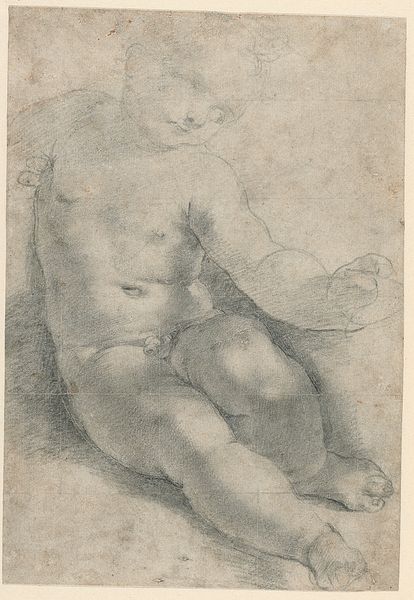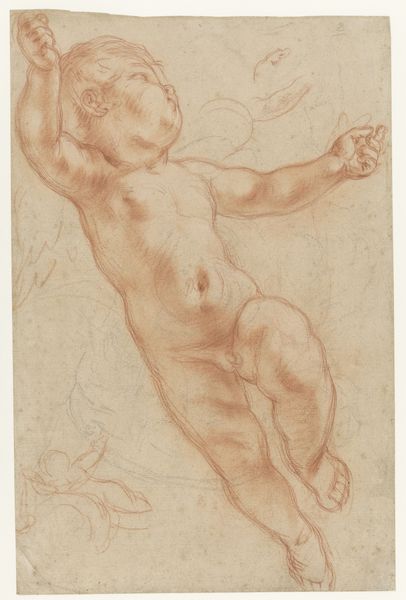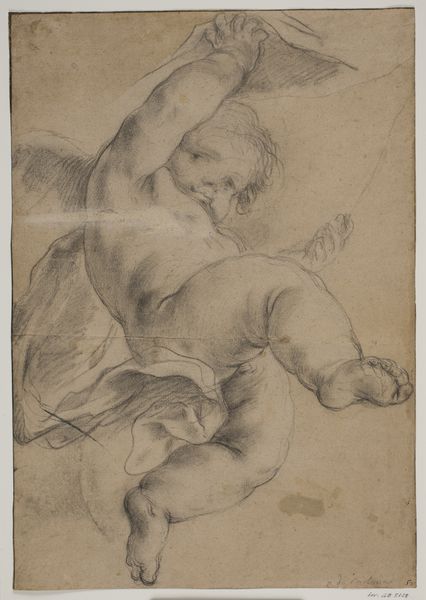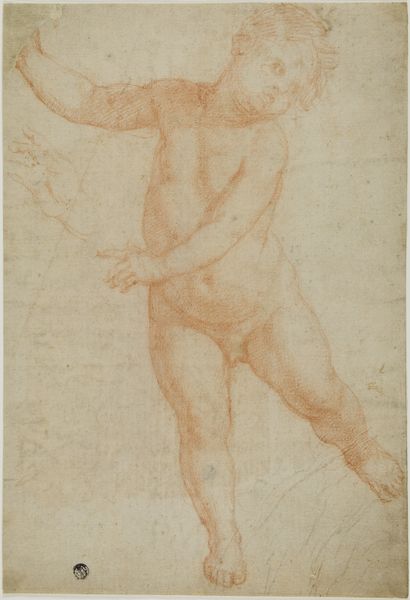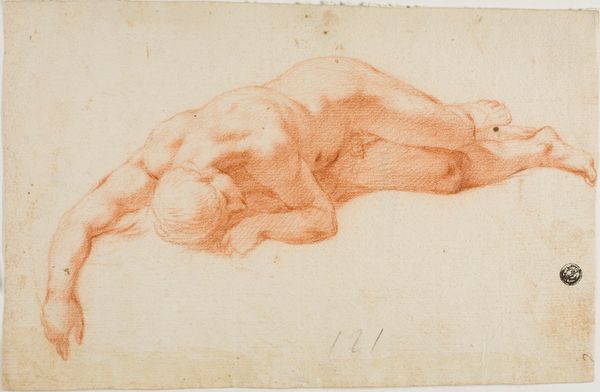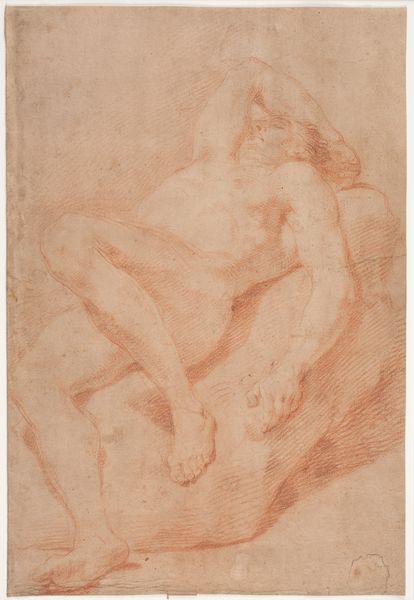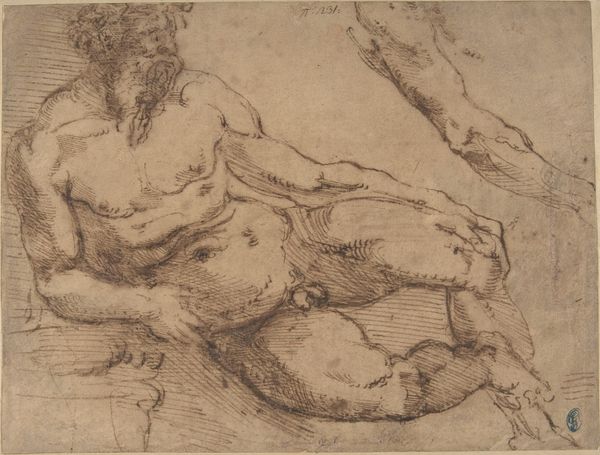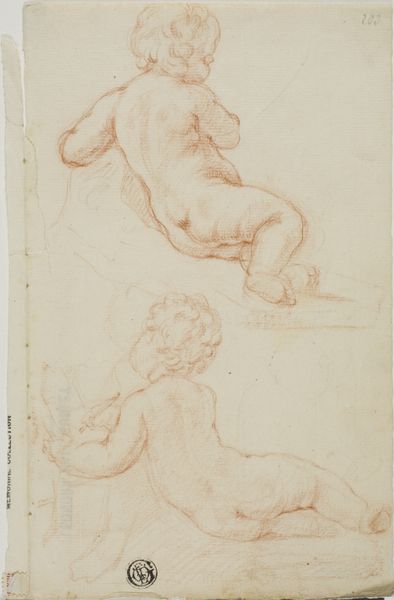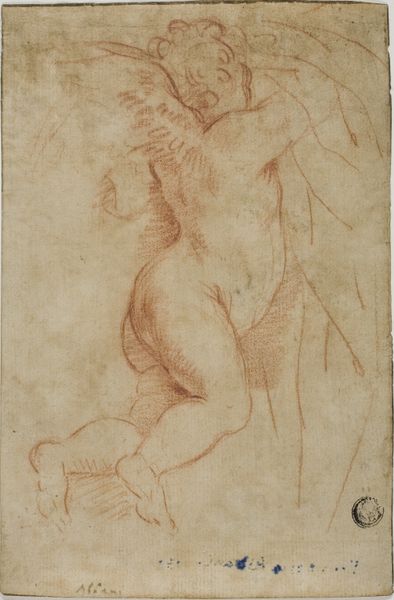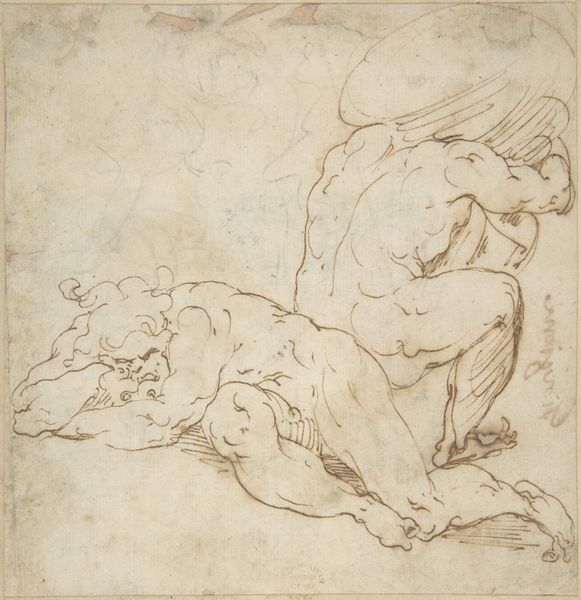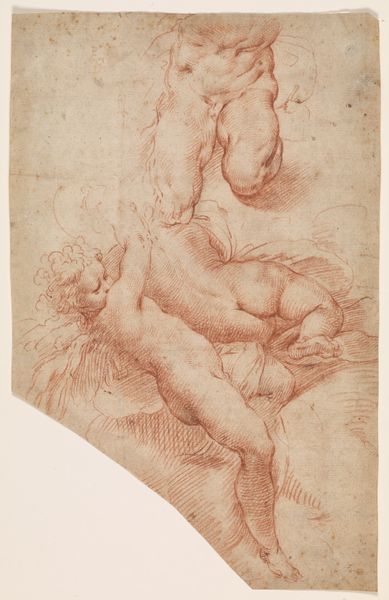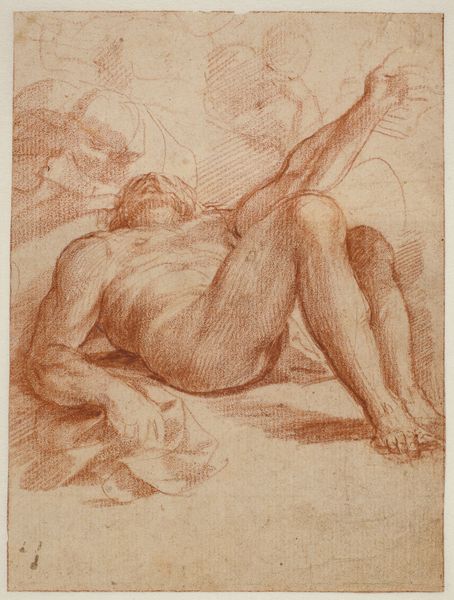
drawing, print, paper, chalk
#
portrait
#
drawing
# print
#
charcoal drawing
#
figuration
#
paper
#
11_renaissance
#
charcoal art
#
oil painting
#
chalk
#
history-painting
#
academic-art
#
italian-renaissance
Dimensions: 210 × 188 mm
Copyright: Public Domain
Curator: Oh, my! He’s tumbling right out at us, isn't he? What a peculiar angle! Editor: Indeed. This is "Foreshortened Putto" by Antonio da Correggio, likely created between 1522 and 1530. It's a red chalk drawing on paper. Correggio was playing with perspective in a way that was quite innovative for the time, creating a sense of depth and movement. Curator: You know, there’s something almost unsettling about that kind of radical perspective for the time, presenting the viewer a rather unfamiliar sight of cherubic innocence and unexpected vulnerability, wouldn't you agree? Editor: It challenges the idealized representations prevalent in earlier Renaissance art, certainly. Though these figures also carried great cultural currency during the Italian renaissance, and this work is another case where the church dictated to artists what their subjects were to be. Curator: Precisely! Angels and putti become, in the religious consciousness, mediators between the human and divine—symbolizing divine love and grace in the eyes of a deeply faithful, largely illiterate public, wouldn't you say? Editor: That is one aspect. Yet these figures became more secularized in time, transforming from divine messengers into decorative motifs. The “putto” served as a display of artistic virtuosity but equally fulfilled a patron's demands to broadcast wealth and taste. Curator: I hadn’t considered it so cynically. I would have thought these artistic experiments in visual tricks are all tied to shifting perceptions of selfhood, offering, for the viewer, new, if momentarily confusing, emotional reflections… Editor: Perhaps it's both, but you can't deny that images become potent tools in navigating religious and social politics! As society evolved, this putto came to stand for different ideals altogether… Curator: A fascinating tension, seeing that transformation, I suppose. It makes me look differently at something that initially seems so straightforward. Editor: Art always carries the weight of its time, whether religious or societal, offering endless layers for interpretation and inspiring new meanings long after the artist's passing.
Comments
No comments
Be the first to comment and join the conversation on the ultimate creative platform.
